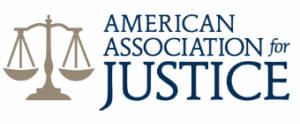 Click Here To Get Started
Click Here To Get StartedOften, citizens from countries such as Mexico or Guatemala are illegally brought across the borders by human traffickers. When they arrive, they are forced to work long hours every day for pennies. This practice is, unfortunately, an exploitation of United States immigration policies. The U.S. Department of State notes that the U.S. is a destination country for thousands of men, women, and children who are trafficked from various parts of the world.
Adults and children both are the victims of human trafficking. This can be forced labor or prostitution. The average age for victims of human trafficking is 20 years old and it is a type of modern slavery. Traffickers promise victims better lives, and that stops as soon as they are able to get them across the border and to work. On top of abysmal living conditions and forced labor, the trafficker is often abusive to the victims. However, the question that comes to mind is why is the United States a destination country for trafficked persons.
It has been reported that most of the time human traffickers exploit work and fiance visas to "legally" move people across the border. The Department of Homeland Security inspector general (IG) found that in cases that they investigated, human traffickers were able to lure their victims into the country by promising them work opportunities or marriage. Another method is that they use family reunification visas to bring people across the border. These immigrants are then forced into labor.
Here are some statistics that Department of Homeland Security's Office of the Inspector General released using data from 2005 to 2014.
It's estimated by The International Labor Organization (ILO) that at least 12.3 million people are victims of forced labor and 2.4 million work in forced labor because of trafficking. The U.S. Department of State estimated 14,500 to 17,500 people are trafficked into the US every year.
Annually, an estimated $44 billion in revenue is generated from human trafficking forced labor. In the United States, people working in certain industries such as agriculture are exempt from labor and employment laws. Human traffickers know this and use it to exploit them. For example, many cases of live-in domestic workers are human trafficking cases. These individuals are exempt from overtime, health care, and protections from workplace organizations. At this stage, the current administration might lead to more domestic workers and or other workers in low-wage sectors, seeking help and safety from law enforcement for fear of being deported which in turn leads to more exploitation.
Although undocumented immigrants have protections, fear makes them easy to exploit. Human traffickers know that. The border patrol rarely shares the names of human traffickers, and this makes it easier for them to continue. The immigration enforcement system is flawed. They are overburdened with work and lack of documentation makes it difficult to keep track of offenders.
Between 2015 and 2016, there was a 35% increase in human trafficking. California, Texas, and Florida ranked among the states with the highest number of reports of human trafficking. Being able to fully police and combat trafficking in this country would mean being able to control ongoing abuses of the U.S. immigration system as well as migrant labor exploitation. This quite frankly is a long road away from happening, especially so given the current political climate.
At this stage, traffickers are using the U.S. immigration policies as well as the labor laws to get away with trafficking more people into the country.


